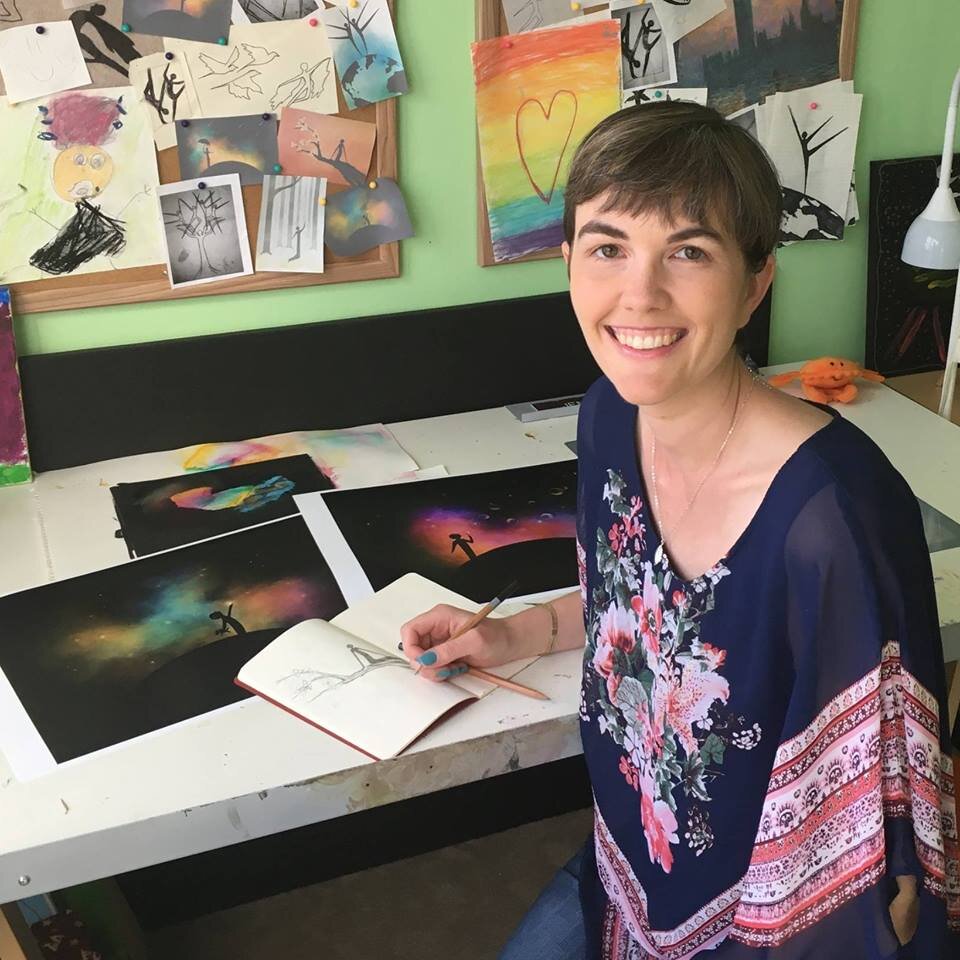Tell me a story: Exercise your storytelling mind
I had planned to center my first activity post around some of my favorite creativity-themed books. A sick kiddo put a monkey wrench in that plan and I haven’t been able to pull it all together. That post will have to wait. Instead, I’m going to start with the concept of storytelling.
As long as I can remember, we’ve had a pretty set bedtime routine for our daughter. It hasn’t changed much over the last eight years or so, since she was old enough to engage in the storytelling process. We alternate nights, my husband going through the routine one night, me the next. The routine looks something like this…she gets all comfy in her PJs, teeth and hair brushed, and she crawls into bed. We read books together and then we turn off the light. That’s when the books are put away and the real fun begins. That’s when she tells us a story.
She doesn’t just pull a story out of thin air. That’s tough. Most people, even the most creatively-inclined, would have difficulty doing that every single night. We all have ideas floating around in our heads, but to pull them out on command is a challenge. Instead of leaving her to her own devices, we each give her one thing to add to her story. Nightly storytelling at our house goes a little something like this:
“Tell me a story about an elephant and cotton candy.”
It’s a prompt. A very simple prompt, with lots of room to grow. From there, she weaves her story, which almost always starts like this:
“Once upon a time, there was a little donkey named Eeyore and he lived with his best friend M. One day, M and Eeyore were playing with their friend Ellie, the elephant.”
M, Eeyore and their friend of the day are usually off to the beach, M’s happy place, though the location does change from time to time. As they hang out at the beach, the other story element will get thrown in to the mix:
“They decided to sell cotton candy. They made all kinds of flavors.”
And she’ll go through all the different possible colors and flavors, painting a beautiful rainbow of cotton candy and a bright-colored booth along the beach selling their creations.
Other nights, there may be a castle involved, or a dragon. The dragons are always friendly. Even though there is a theme to her stories and certain things don’t change from night to night, she’s always coming up with something new, some way to connect the two ideas that she’s been given. The variety is in the details. She’s been doing this for so long, that she has no trouble telling these stories. They can go on rather long some nights…especially on nights when I’m tired and ready for bed myself!
Now that you know a little bit out our storytelling routine, I’m going to introduce the Gently Guided Activity. This is what I’m calling the mental exercises I’m setting forth for our creative brains. These are activities with parameters, but nothing that inhibits the flow of creativity, nothing that forces you into a box. There will often be many ways of achieving the goal of a Gently Guided Activity, allowing you to choose the medium or outlet that appeals to you or your child most. I’m not throwing you into the deep end of the creative pool. I’m giving you water wings and helping you float until you can swim through these amazing waters on your own.
A Gently Guided Activity for Storytelling: Find a time during the day to introduce your child to storytelling. It doesn’t have to be bedtime. Maybe you’re looking for good dinnertime conversation. Maybe it’s a fun idea to add to your morning routine. Pick a time and give your child two things to throw into a story. Listen. See what they come up with. Write it down, if you’d like. Do this a few times. It doesn’t have to be daily but give them practice. Storytelling gets easier, the more you do it. Flex that muscle.
Adults, this is a great one for you, too! Give yourself a prompt (or work on the same one as your child). Two things that don’t necessarily go together. Think of a story in your mind or write it down. It can be anything from a few sentences to a few pages. Just let the ideas flow, whether you think they’re good or not. Don’t judge, just practice.
If you feel up to it, you could always add sketches to your story. Or maybe you’d rather not tell a story at all. Maybe you’d rather use the prompt to write a poem or a song. Feel free to take the ideas from any Gently Guided Activity and adapt them to your own interests.
I’ll give a few prompts to get you started:
A turtle and pizza
A lion and a paint brush
A castle and a penguin
A lizard and a book
A caterpillar and ballet
A chest full of gold and a dog
A surf board and a piano
A train and a microscope
A box and an elephant
A hand print and a map
A tire swing and a stained-glass window
Have fun telling stories and let me know how it goes!






